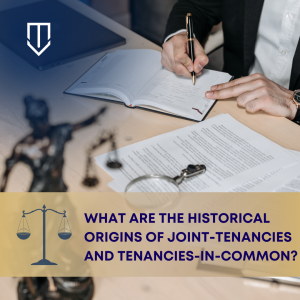 No, not unless they want to convert their own, singular interest into two or more shares. The reason for this is that grantors in a deed can only convey what they already own. If two tenant in common co-owners want to make themselves joint tenants, then they can collectively convey their interests to themselves in a deed. This works because, together, they own the whole property.
No, not unless they want to convert their own, singular interest into two or more shares. The reason for this is that grantors in a deed can only convey what they already own. If two tenant in common co-owners want to make themselves joint tenants, then they can collectively convey their interests to themselves in a deed. This works because, together, they own the whole property.
But if one co-owner conveys the property to himself, and declares that he is now a joint tenant, that doesn’t work. Only half the property is being conveyed, and only one person is receiving the property. This does not meet the requirements of California’s Civil Code, which requires that a joint tenancy vest in two or more persons with equal shares. (Civ. Code § 683.)
 California Partition Law Blog
California Partition Law Blog


 Can a Tenant in Common Force a Sale?
Can a Tenant in Common Force a Sale? Generally, married couples who buy homes in California are afforded certain rights and protections under California law. These rights and protections do not necessarily apply to unmarried couples who own property as tenants-in-common. Unmarried couples can still take further steps to protect their property rights.
Generally, married couples who buy homes in California are afforded certain rights and protections under California law. These rights and protections do not necessarily apply to unmarried couples who own property as tenants-in-common. Unmarried couples can still take further steps to protect their property rights. “Joint tenancy” is a phrase that most people associate with the co-ownership of a property. And indeed, this is correct. Joint tenancy is a form of co-ownership in California, second only to
“Joint tenancy” is a phrase that most people associate with the co-ownership of a property. And indeed, this is correct. Joint tenancy is a form of co-ownership in California, second only to American law has its roots in the laws of England. As such, many of the laws still on the books in the 21st Century depend on what English judges thought prior to our War for Independence began in 1776. Because our modern laws go back centuries since before the United States was a country, we should care about how our legal terms were originally understood as they may implicate a judge’s decision today. The most important of all the English Judges who influenced our modern laws was most likely Sir William Blackstone.
American law has its roots in the laws of England. As such, many of the laws still on the books in the 21st Century depend on what English judges thought prior to our War for Independence began in 1776. Because our modern laws go back centuries since before the United States was a country, we should care about how our legal terms were originally understood as they may implicate a judge’s decision today. The most important of all the English Judges who influenced our modern laws was most likely Sir William Blackstone.